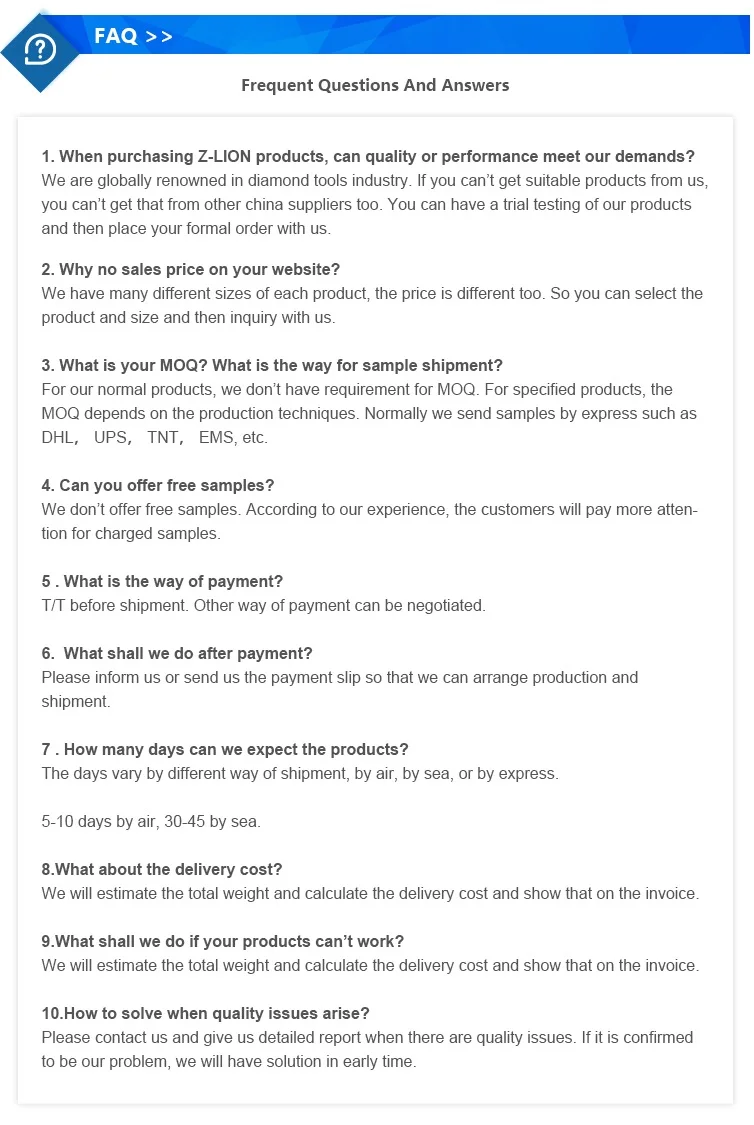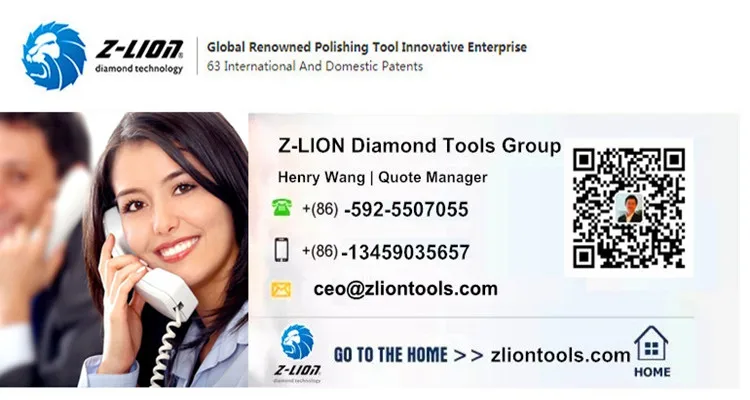Keywords grinding wheel, CBN | 2019-12-09 11: 00: 56 | Source Yongneng New Material
Abstract: Based on self-made low-temperature polymer molding additives, the flexural strength of ceramic CBN test strips, the uniformity of the molding material of the grinding wheel, the uniformity of the microstructure of the grinding wheel, and the microscopy were studied in three different ways: no addition, particle addition, and melt addition. Influence of structure and grinding performance.
The results show that when the polymer molding additive is melt-added, it can form a uniform package on the surface of the CBN grinding wheel molding material after cooling, and the looseness and uniformity of the molding material are significantly improved; when the molding additive is added in the form of particles and melting The extreme difference in flexural strength of the prepared ceramic CBN test strips was reduced by 34.02% and 73.77%, respectively, compared to those without the auxiliary test strips. The density difference of the ceramic CBN internal grinding wheel was reduced by 56.83% and 79.14%, and the organization structure of the grinding wheel is more uniform; when the molding aid is melted, the prepared ceramic CBN internal grinding wheel does not have a bell mouth when grinding the vane pump stator, and its life is twice that of the grinding wheel without the addition of a polymer molding aid .
Ceramic CBN internal grinding wheels have a series of advantages such as good sharpness, high grinding accuracy, low grinding temperature, high durability, good shape retention, and acid and alkali resistance. They are widely used in automobiles, refrigeration, bearings, machine tools, etc. Hole processing in the industry. Ceramic CBN internal grinding wheels are mostly products with a high aspect ratio. How to achieve uniform forming of the grinding wheels has become the focus of research. In machine pressing, the method of increasing the number of horns and feeding times is often used to compensate for the attenuation of pressure transmission during the pressing process. Although it can improve its yield, it can only slightly improve the gradient distribution of the density of the grinding wheel. There are still obvious differences between the hardness and the hardness of the grinding wheel. . Li Qing et al. Studied the effect of isostatic pressing on the performance of ceramic bonded diamond abrasive tools, and showed that the use of isostatic pressing can significantly improve the density and uniformity of the grinding wheel, but the process is complicated and inefficient, and the forming wheel The rejection rate is higher. Xiao Bing proposed a new process for pouring atmospheric ceramic wheel with "hydrogen peroxide + stabilizer", and carried out experiments and discussions on hydrogen peroxide, foaming stabilizer and slurry stabilizer that affect process performance. The porosity, pore shape, tissue uniformity, grinding wheel strength and other indicators of the cast-in-air-hole grinding wheel are better than those of the press-molded atmospheric-hole ceramic wheel, but the applicability of the process to coarse-grained wheels needs further the study.
Polymer molding additives are generally used in ceramic extrusion molding, gel injection molding, and cast molding to improve the fluidity and plasticity of molding materials. Therefore, the effects of different addition methods of polymer molding additives on the flexural strength, microstructure uniformity, microstructure and grinding performance of ceramic CBN internal grinding wheels under the normal-scale compression molding process can be studied for Provide a basis for the application of uniform forming of hard wheels.
1. Experimental materials and processes
CBN abrasive with a particle size of 75-90 μm (particle size code 170/200) and ceramic binder are mixed at a mass ratio of 8: 2, and an appropriate amount of dextrin solution is added to mix uniformly. : Microcrystalline paraffin: stearic acid mass ratio = 6: 3: 1) is added and mixed uniformly in two ways: particle (size 100-150 μm) and melting, combined with a CBN sample without adding a polymer molding aid to obtain Samples of three kinds of formulations are represented by 1 # (without added molding aid), 2 # (added granules with added molding aid), and 3 # (melt-added with molding aid). The chemical composition of the experimental ceramic binder is shown in Table 1.
Weigh the uniformly mixed molding material under a pressure of 35 MPa and press it into a 50 mm × 5 mm × 6 mm anti-folding bar and a 1A8 20 × 41 × 14 internal grinding wheel, and heat up at a rate of 100 ° C / h Incubate at 850 ℃ for 2 h. After firing, use a three-point bending strength tester to test the flexural strength of the test strips; mark the upper, middle 1, middle 2, and lower parts along the axis of the internal grinding wheel, and then cut them into 4 sections with a diamond band saw Grind to the same height on a grinder, use a vernier caliper with a graduation value of 0.02 mm to measure the hole diameter, outer diameter and height of the wheel segment, and then use an electronic balance with a graduation value of 0.01 g to weigh the mass of each segment and calculate the outer diameter of each segment. Range ratio (ratio of dimensional range to theoretical outer diameter) and ratio of density range (ratio of density range to theoretical design density); FEI's Inspect S50 scanning electron microscope was used to observe the inner frosted matte made of molding materials with different addition methods The fracture morphology at the maximum and minimum wheel densities; field grinding experiments were carried out using three types of grinding wheels to investigate the actual performance of the wheels.
Table 1 Chemical composition of ceramic binder
Table 1 Composition of vitrified bond

2 Experimental results and analysis
2.1 Influence of Adding Method on the Uniformity of Grinding Material
Ceramic CBN grinding wheel forming materials generally consist of CBN abrasives, fillers, ceramic binders, auxiliaries, wetting agents, etc. The qualified molding material is a ceramic binder that evenly covers the surface of the CBN abrasive and filler, the mixture is uniform, and the binder and abrasive are not Obvious agglomeration. Generally, when the external conditions are basically the same, the properties of the mixture itself determine the uniformity of the mixture. These properties include the particle size and size distribution of the material, density (or specific gravity), particle shape, surface characteristics of the particles, flow capacity, resistance Agglomeration ability, etc., among which particle size, particle size distribution and density are the most important.
In this experiment, high-molecular materials were used as molding aids. The density of the added high-molecular substances was low, only about 1/3 of the density of normal CBN molding materials. How to disperse them uniformly in the molding materials was particularly important. Mixtures formulated in different ways are shown in Figure 1.

1 # molding material in Figure 1a is not added with molding aids, which has poor looseness and is distributed in a wet shape; the polymer additive in Figure 1b is added in the form of particles, and the uniformity of distribution in the 2 # molding material is not good. The density of macromolecule additives is small, and the wetting agent added during mixing cannot effectively adhere the macromolecule additives and CBN abrasives together, causing the macromolecular additives to aggregate and disperse unevenly; the additives in Figure 1c are in a molten form. After adding and cooling, it forms a uniform package on the surface of the CBN abrasive, and the # 3 molding material has good looseness and uniformity after sieving.
2.2 Effect of addition method on flexural strength of test strips
The CBN test strips made with 3 different formulations were tested for the flexural strength of 6 points in order from left to right. The test results are shown in Figure 2.

It can be seen from Figure 2 that the average values of the flexural strength of the 1 #, 2 #, and 3 # test strips for 6 times are 72.78, 72.41, and 73.68 MPa, respectively, which are not much different from each other; but the extreme values of the 6 measurement points are The difference is very large, and the range of the 3 # sample added in the molten form is the smallest, which is 6.4 MPa. The smaller the range, the more uniform the organization of the points in the 3 # test strip. The reason is: there is a difference in the uniformity of the molding material in Figure 1. In addition, due to the arching and stacking of the material during the feeding and scraping process, there is a certain degree of non-uniformity in the dispersed material; further, the polymer is added by melting to help The surface layer of the molding material of the agent is evenly wrapped with a layer of polymer material. After cooling, the polymer material is in a solid state, so that the single abrasive or abrasive mass is dispersed, and the looseness and fluidity of the material are significantly improved. It is easier to achieve uniform distribution, so the structure of the grinding wheel is more uniform after firing, and the difference in flexural strength is the smallest.
2.3 Effect of the addition method on the uniformity of the grinding wheel
Figure 3 is a photo of a ceramic CBN internal grinding wheel with a height-to-diameter ratio of 13 after firing. The fired wheel is cut into 4 sections according to the mark in Figure 4, and the uniformity test results of the grinding wheel are shown in Table 2.
It can be clearly seen from Fig. 3a that the upper, middle, and lower colors of the 1 # grinding wheel without the addition of molding aids have different shades, the lightest in the middle, the darkest in the lower portion, and the upper portion in the middle. According to the measurement data in Table 2, it can be known that the outer diameter and density distribution of the upper, middle, and lower parts of the 1 # grinding wheel are uneven. The darkest outer diameter and density are the largest, and the middle part has the smallest outer diameter and density, and the largest and smallest parts. The dimensional range and density range are 0.54% and 5.56%, respectively.

It can be seen from Table 2 that the uniformity of the 2 # and 3 # grinding wheels of the two formulations after the addition of the polymer molding additive is improved compared to the conventional cold-pressed 1 #. Among them, the 3 # grinding wheel (Figure 3c) added in molten form has the best color consistency. The measurement data in Table 2 shows that the size difference is 0.04 mm, the density difference is 0.026 g / cm3, and the size The range and density range are also only 0.18% and 1.16%. It is further verified that the uniformity of the grinding wheel is the best.
The reason for analysis is that due to the internal friction between the powder particles and the external friction between the powder particles and the mold wall during the conventional cold pressing, the pressure transmission loss during the pressing process is large, causing the uneven distribution of the compact density, and the pressure from the pressure mold The nearer part of the indenter has a higher density and the farther part has a lower density. Although this experiment adopts two-way press molding, it can partially improve the density gradient distribution of the green compact, but the effect is not large. The green compact still has a high density at both ends and a small intermediate density. After the polymer additive is added, the molding material will undergo a certain plastic deformation due to the pressure. The pressure transmission is changed from the original hard contact transmission to the semi-plastic transmission, which can significantly reduce the pressure attenuation of the transmission process. At the same time, the polymer molding additive makes The internal friction between the powder particles and the external friction between the powder particles and the die wall are reduced to varying degrees, which effectively improves the uniformity of the grinding wheel structure. Moreover, the polymer additive added in the molten form makes the molding material uniformly distributed, which has a better effect on improving its lubricity and fluidity. When added in the form of particles, the polymer is not uniformly distributed in the molding material, which has lubrication and anti-wear effects. Smaller, the effect of improving the uniformity of the molding material is limited.
Table 2 Uniformity test results of grinding wheels
Table 2 Test results of grinding wheel uniformity

2.4 Effect of the addition method on the microstructure of the grinding wheel
In order to further observe the influence of different addition methods on the internal morphology of the grinding wheel, the sectional morphology of the internal grinding wheel in FIG. 3 was observed, and the results are shown in FIG. 5.
Figures 5a and 5b show that the fracture morphology at the largest and smallest densities of the 1 # grinding wheel is obviously different. The grinding wheel at the smallest density has loose tissues, more stomata, and incomplete bridge connection. The agglomerates formed by the agent and the abrasive and the agglomerates caused by the uneven transfer of the molding pressure make the wheel structure dense, with fewer pores and different sizes, and the binder bridges completely intersect to form a whole. These are the causes of uneven strength and density distribution of the grinding wheel.
Figures 5c and 5d show that when the polymer molding additive is added in the form of particles, the microstructure uniformity of the 2 # grinding wheel is significantly improved, and the difference in micromorphology at the smallest and largest densities is improved compared to the existing 1 # grinding wheel. The bridge connection tends to be complete at the lowest density, and the stomata distribution at the highest density is significantly improved. From Figures 5e and 5f, it can be seen that when the polymer molding additive is added in a molten form, the microstructure uniformity of the 3 # grinding wheel is further improved, and the binder bridges at the maximum and minimum density are uniform in thickness, complete in distribution, and the size of the pores. More consistent, abrasive particles are evenly distributed. This also explains why the flexural strength and the uniformity of the microstructure density of the grinding wheel with the addition of molding aids are improved compared with those without the addition.

2.5 Influence of Adding Method on the Performance of Grinding Wheel
In order to more intuitively compare the differences between grinding wheels with different addition methods, ceramic CBN with a size of 1A1W 20 × 41 × 14 × 62 × M6 made without adding polymer molding aids, added in the form of particles, and melt-added is selected. Internal grinding wheels, labeled 1 #, 2 #, 3 #, respectively, are indicated by the grinding process of the vane pump stator. The model of the machine is TOYO-T-182PG internal hole curve grinder, the maximum spindle speed is 30 000 r / min, the machining allowance is φ0.8 mm; the grinding wheel is trimmed with electroplated rollers; the stator machining requirements are: straightness L≤2 μm, smooth Rz≤2.5 μm. The actual grinding effect of the stator is shown in Table 3. The durability in Table 3 refers to the number of workpieces processed during the two dressing intervals of the grinding wheel, and the life refers to the total number of qualified workpieces that can be processed by a single grinding wheel.
Table 3 Comparison of grinding results of internal grinding wheels with different addition methods
Table 3 Ground results of CBN internal grinding wheel with different addition mode

It can be seen from Table 3 that the durability and service life of the 3 # grinding wheel are the highest among the 3 types of grinding wheels, which are 2 times that of the 1 # grinding wheel, respectively, and the straightness and roughness of the workpiece being processed are also significantly higher than those of the 1 # grinding wheel. For the 2 # grinding wheel, there is no bell mouth. This is because the ceramic CBN grinding wheel prepared by adding a polymer additive in a melting manner is relatively uniform in both micro and macro structures. When the abrasive particles and the binder bridge are uniformly distributed inside the grinding wheel, the cutting edge size consistency is better during the grinding process. The roughness of the processed workpiece is also low; the consistency of the different parts of the grinding wheel makes the hardness deviation of the grinding wheel smaller, so the straightness of the processed workpiece is better, and the occurrence of the bell mouth will be reduced.
3 Conclusion
(1) When the polymer additive is added in a molten manner, it forms a uniform package on the surface of the CBN abrasive after cooling, which significantly improves the looseness and fluidity of the molding material after sieving, and it is easier to achieve uniformity of the grinding wheel structure during feeding and pressing.
(2) When the polymer molding additives are added in the form of particles and melts, the flexural strengths of the prepared ceramic CBN test strips are 16.1 and 6.4 MPa, respectively, which are lower than those of the test strips without added additives. The density difference rates of the prepared ceramic CBN internal grinding wheels were 2.4% and 1.16%, which were 56.83% and 79.14% lower than those of the unadded wheels, and the structure of the grinding wheel was more uniform.
(3) The ceramic CBN internal grinding wheel prepared by adding a polymer additive in a molten form does not have a bell mouth when grinding the vane pump stator. The service life is 2 600-2 800 pieces and the durability is 10-12 pieces. The life and durability of the grinding wheel of the polymer molding additive have been increased by 2 times, and the roughness and straightness of the processed workpiece have also been significantly improved.

-All diamond tools can be ordered and fabricated!
- Henry Wang | Quote Manager
Henry Wang | Quote Manager
-WhatsApp:+86-13459035657
-Email: ceo@zdiamondtools.com
-Web www.zdiamondtools.com
Company Profile
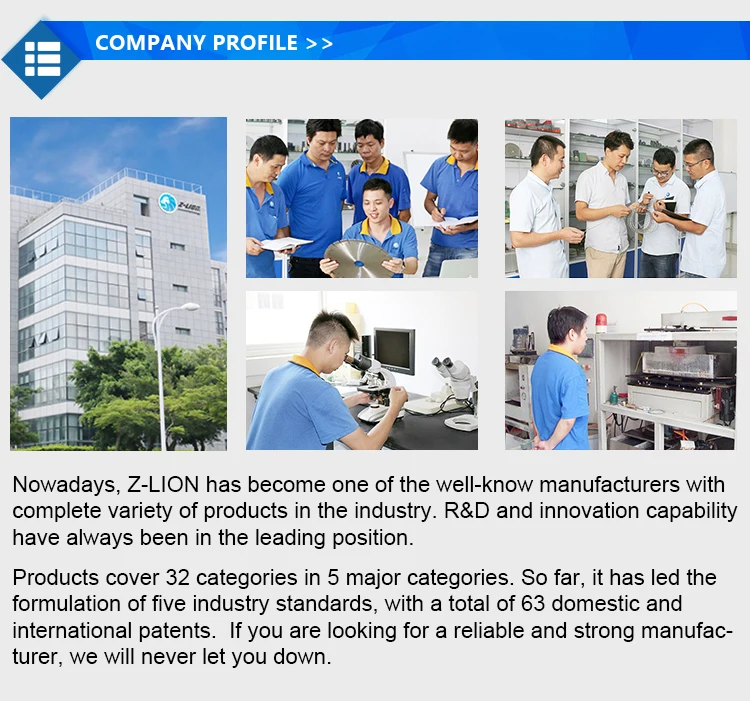
Certifications
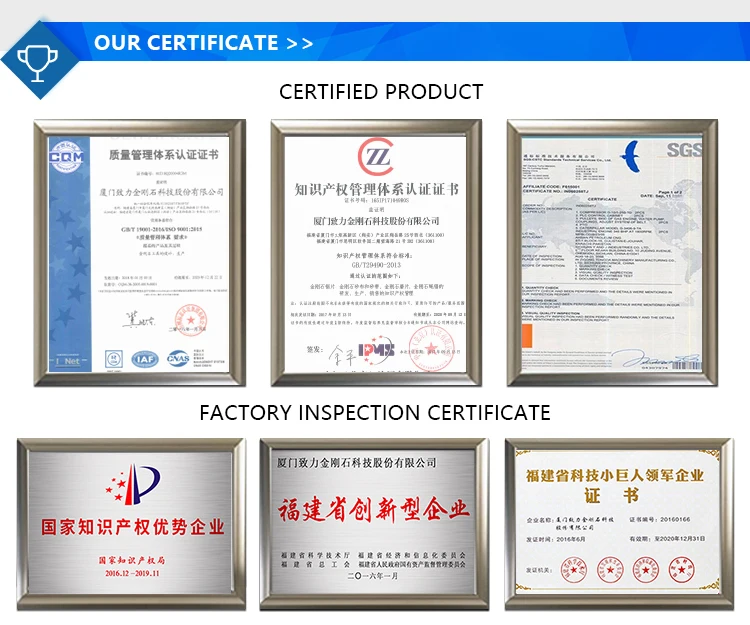
Company Team

Exhibition
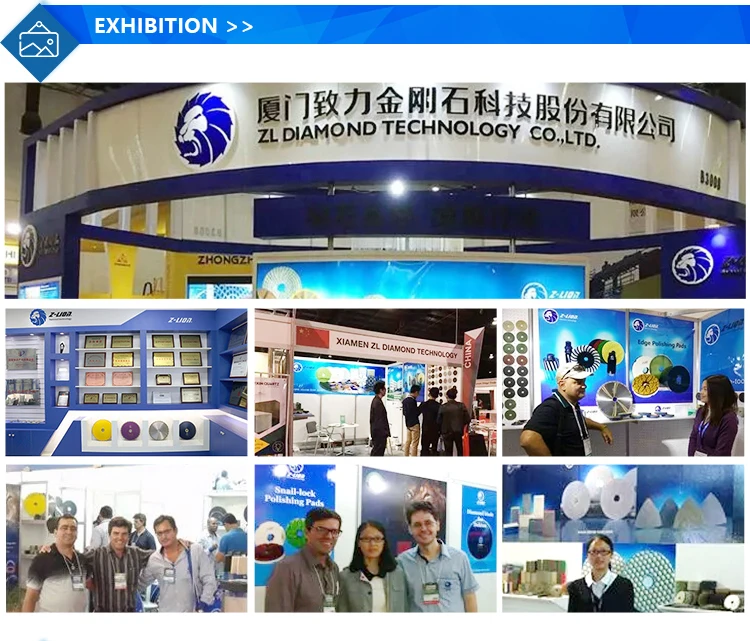
Logistics

FAQ
